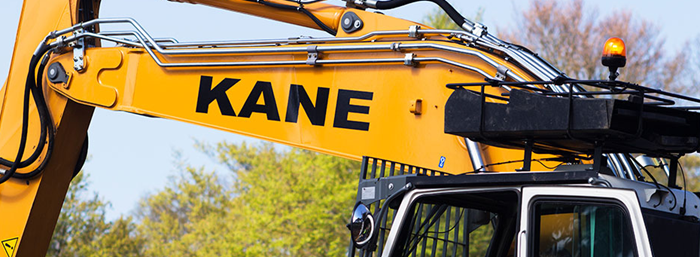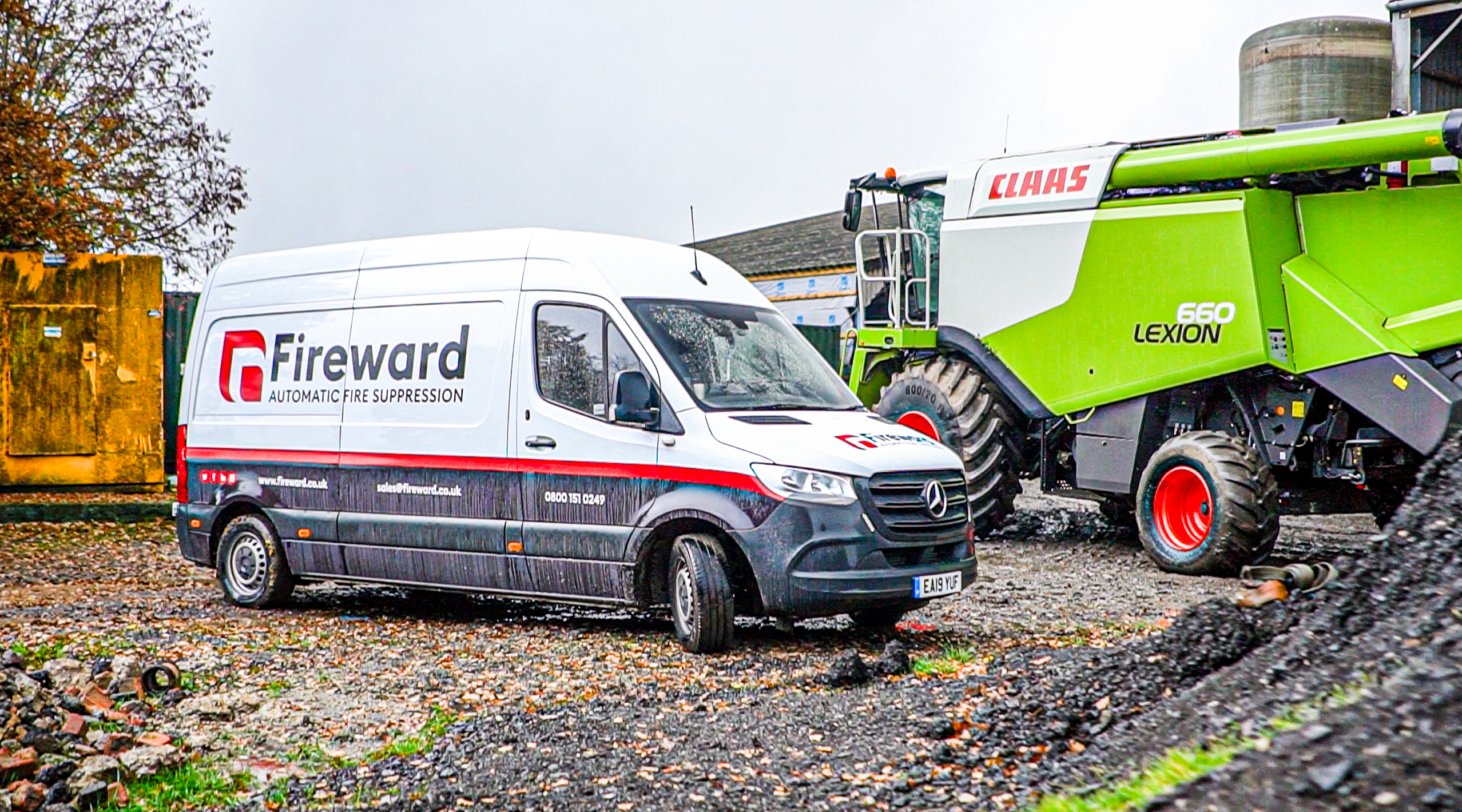Common Fire Hazards in HGVs and Lorries and How to Prevent Them
HGVs and lorries are the workhorses of Britain’s road network. They underpin logistics, construction and other essential supply chains, but face a significant risk: fire.
Whether it’s an engine bay ignition or brake failure, fires in HGVs are often more serious and expensive than other commercial and private vehicles.
Understanding what causes fires in HGVs and lorries — and how to prevent or suppress them — can be the difference between minor damage and the complete loss of a vehicle.
In this article, we’ll look at the common causes of lorry and HGV fires, how you can prevent them and why fire suppression systems are vital.
Why do lorries catch fire?
The design of modern lorries and HGVs houses several fire risks. Each of the three elements of the fire triangle — fuel, heat and oxygen — is readily available in HGVs and lorries:
- Commercial vehicles carry a lot of flammable fuel and hydraulic fluid
- Engines and brakes operate at high temperatures
- Engines run for extended periods and under demanding conditions
- Oxygen is in the air all around these vehicles, whether in operation or stationary
But fires almost always spark as the result of an underlying issue, and it’s no different in HGVs. Below are the most common causes of fires in HGVs.
A lack of maintenance
A lack of regular maintenance is arguably the biggest underlying cause of HGV fires. Poor maintenance practices directly lead to failures in the most fire-prone vehicle systems like brakes, wheel bearings, hydraulics and electrical wiring. When you neglect HGV components, the risk of overheating and ignition rises sharply.
Faulty brakes
Faulty brakes and wheel assemblies are responsible for a large number of HGV fires. These vehicle parts experience extreme pressure under large loads. If heavy braking occurs, temperatures can soar, leading to the ignition of bearing or brake grease.
To make matters worse, brake drum systems, common on many lorries, can transfer heat directly onto adjacent tyres, increasing the risk of ignition.
Electrical failures
Electrical systems are another common cause of fire in HGVs and lorries. Modern vehicles use complex wiring harnesses for both power and control systems, making the risk of faults, short circuits and overheating ever-present.
Hydraulic systems
Hydraulics are found on almost every HGV, making leaks a serious concern. Many systems operate at thousands of PSI, sometimes exceeding 10,000 PSI in specialist equipment. When hoses fail, hydraulic oil can atomise under high pressure and create a fine mist, which can ignite if it touches hot surfaces or sparks.
Spilt fuels
Spilt fuel is a severe fire risk for HGVs and lorries, whether it’s the fuel they’re carrying or using. Diesel or petrol can escape during refuelling, faulty tank repairs or from punctures and collisions.
Even though diesel is less volatile than petrol, fuel vapours can ignite on contact with hot surfaces, electrical sparks or open flames present in the engine bay or electrical systems. It doesn’t take much fuel to spill under HGVs to cause an ignition.
How can you prevent lorry and HGV fires?
Given the size of these vehicles, the impact of a single lorry fire can quickly escalate, causing damage to loads, buildings and other vehicles. If a lorry catches fire on a motorway, for instance, it can cause prolonged road closures and even risk to life.
It’s not just the upfront cost of replacing a vehicle you need to worry about. A lorry on fire can have much wider consequences, like supply chain delays, additional business interruption and lost contracts. These are often far more expensive than the cost of replacing a vehicle.
Prevention, therefore, is paramount. Here are essential fire prevention measures every business should follow:
- Maintain your vehicle regularly. Effective prevention begins with rigorous maintenance regimes that check brakes, wheel bearings, hydraulic hoses, fuel systems and electrical wiring. Immediately repair any defects to minimise ignition risks.
- Perform daily walkaround inspections. Drivers should conduct daily checks, paying special attention to tyres, loose wires and fluid levels. They should look out for visible leaks or abnormal smells.
- Refuel safely. Follow best practice when refuelling, such as always switching off engines, avoiding smoking and cleaning up any spills.
Unfortunately, even the strictest inspection and maintenance routines don’t account for fires you have little control over. That’s why fire suppression systems for lorries are vital.
How to suppress lorry and HGV fires
Even with the most diligent maintenance procedures, fire can still break out unexpectedly, particularly if components fail on the road or heat from friction reaches extreme levels.
HGV and lorry fire suppression systems use a network of pneumatic detection tubes that burst when a fire occurs. The system automatically discharges one or more suppressant agents from mounted cylinders, which suppress the fire in seconds.
At Fireward, our HGV fire suppression system delivers 24/7 power-free protection without driver intervention. It minimises operational impact, can prevent complete asset loss and saves lives.
Trust Fireward for unmatched vehicle fire suppression
Protect your fleet, your drivers and your business today with Fireward’s proven fire suppression technology. Our systems operate quietly in the background, activating automatically to contain fires before they spread — with zero driver effort required.
To find out more about our fire suppression systems, get in touch by calling 0800 151 0249 or emailing sales@fireward.co.uk.
Protecting People and Assets 24/7
Call: 0800 151 0249
Email: sales@fireward.co.uk.
You May Also Like
These Related Stories

The Kane Group: A Journey to Fire Suppression.
.jpg.png)
High Performance Fire Suppression Systems Protecting Your Valuable CNC Machines



No Comments Yet
Let us know what you think